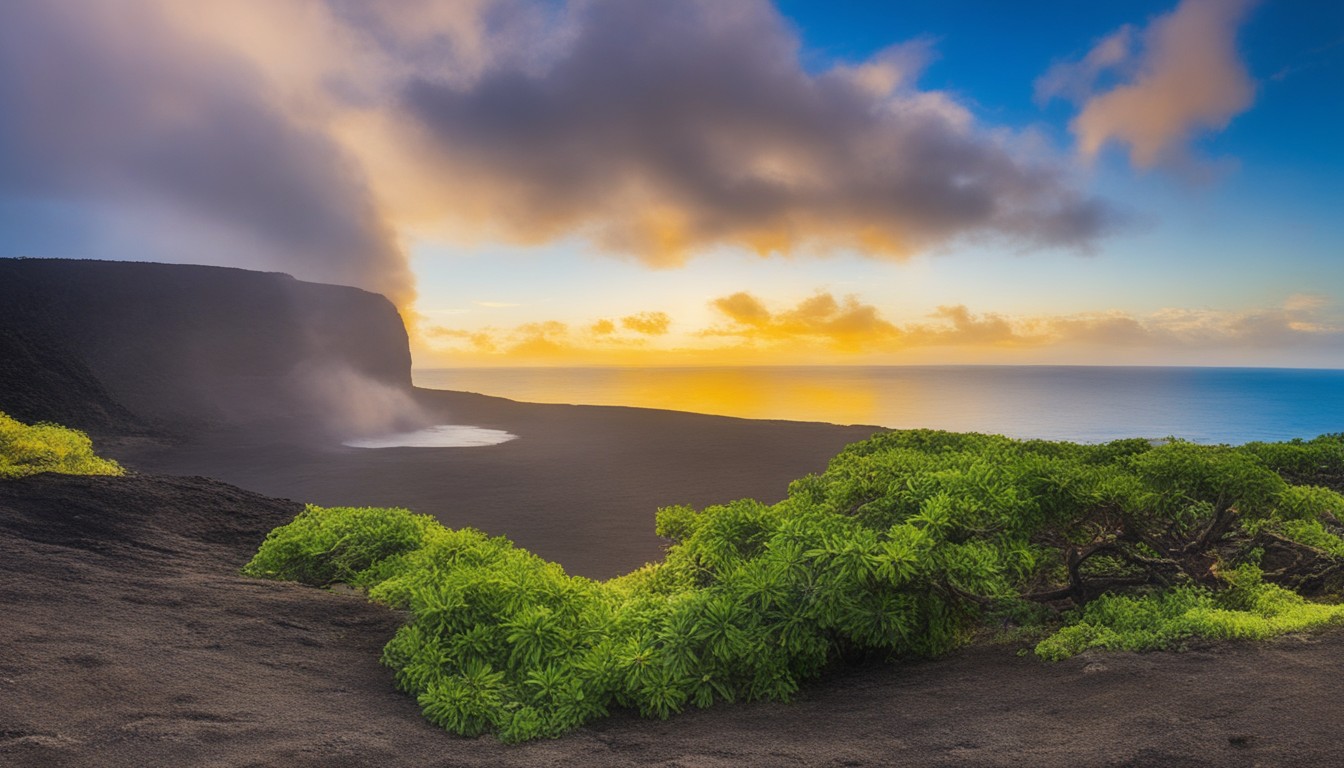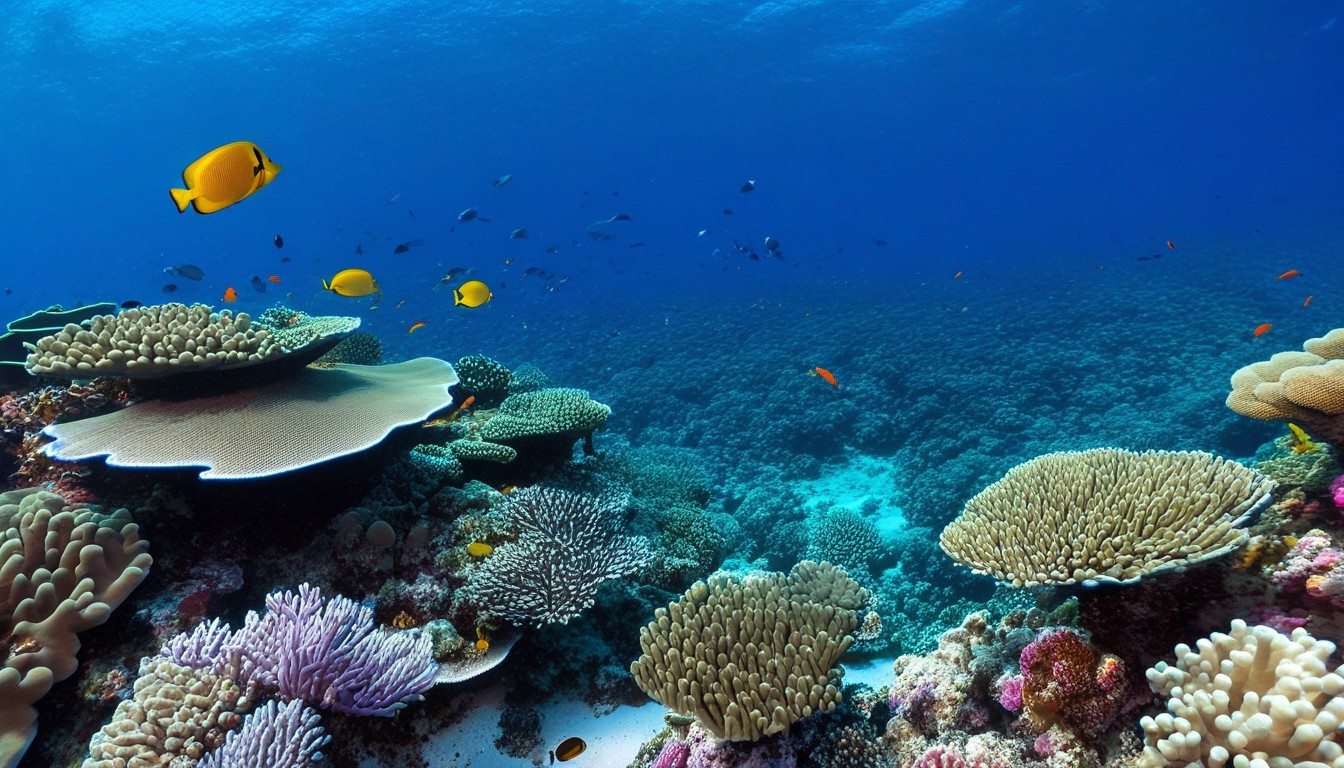In the captivating world of Hawaii, each island boasts its own unique charm. Among these gems of the Pacific Ocean, there’s one that stands out for its sheer size and natural wonders—the Big Island.
You might be wondering, what is the Big Island in Hawaii called?
Let’s explore the official name, the alternative monikers, and the sheer magic that makes this island so special! Whether you’re planning a visit or simply curious, the Big Island of Hawaii promises a world of enchantment you won’t want to miss.
What Is the Big Island in Hawaii Called?

Nestled in the heart of the Pacific Ocean, the largest and most majestic island in Hawaii is officially known as “Hawaii.”
Yes, you read that right—the same name as the entire state.
To avoid confusion, the Big Island is often referred to as “Hawaii Island” to distinguish it from the state’s name, and it is its own county, Hawaii County.
The name “Hawaii” itself has a rich history that traces back to Polynesian voyagers who discovered the islands centuries ago.
It is believed to have originated from the legendary figure Hawaiʻiloa, a Polynesian navigator who, according to oral tradition, first set foot on these shores. Hawaiʻiloa’s name is thought to be a reference to the homeland he sailed from, somewhere in the South Pacific.
Interestingly, the use of the name “Hawaii Island” as its official title is relatively recent, dating back to the early 20th century. Before that, it was often referred to as “Big Island” due to its considerable size compared to the other Hawaiian islands.
Alternative Names of the Big Island
Beyond its official title as “Hawaii Island,” the Big Island goes by several alternative names that reflect its unique character and cultural nuances.
1. Big Island: The most commonly used alternative name is simply “Big Island.” This moniker is a nod to its vast size, as it is not only the largest in Hawaii but also one of the most expansive islands in the world.
2. Orchid Isle: Another endearing nickname, the Big Island is often referred to as the “Orchid Isle” due to its lush landscapes and the abundance of orchids that thrive in its tropical climate.
3. Volcano Island: Given its geological prominence, it’s no surprise that some call it the “Volcano Island.” This name highlights the island’s active volcanoes, including Kīlauea, which has shaped its terrain over millions of years.
4. Native Hawaiian Names: It’s important to note that the Big Island has different names in the Hawaiian language. “Hawai’i” is the name in the native tongue, and this is what you’ll often hear from locals.
These alternative names capture various facets of the island’s character, from its geographical size to its natural beauty and volcanic activity. Each name carries a hint of the island’s essence, reflecting the awe and wonder it inspires in those who visit or call it home.
Other Islands in Hawaii and Their Names
Hawaii is composed of eight major islands, along with numerous smaller islets. The eight ones are Niihau, Oahu, Maui, Kauai, Molokai, Lanai, Kahoolawe, and the Big Island.
Oahu is the most populous island in Hawaii and is home to the state’s capital city, Honolulu. It is known for its vibrant city life, famous Waikiki Beach, and historical sites like Pearl Harbor.
Meanwhile, Kahoolawe was historically used as a target range by the U.S. military and was largely uninhabited for many years.
Niihau is the westernmost and the smallest of the inhabited Hawaiian Islands. It is often referred to as the “Forbidden Island” because access to it is restricted to protect its native Hawaiian culture and environment.
Each island has its own distinct character, natural beauty, and cultural heritage, making Hawaii a diverse and captivating destination for travelers.
Geographical Features of the Big Island
The Big Island of Hawaii is a geographical marvel, renowned for its stunning diversity of landscapes and remarkable size among the Hawaiian Islands. Let’s delve into the island’s captivating geography.
1. Vast and Varied Terrain: Covering an area of approximately 4,028 square miles, the Big Island is not only the largest island in Hawaii but also larger than all the other Hawaiian islands combined. Its terrain is incredibly diverse, composing from green and expansive rainforests and cascading waterfalls to barren lava fields.
2. Five Distinct Volcanoes: The island’s geological history is marked by the presence of five major volcanoes: Mauna Kea, Mauna Loa, Kīlauea, Hualālai, and Kohala. These volcanoes have shaped the island over millions of years, with some still exhibiting signs of activity.

3. Snow-Capped Summits: Mauna Kea and Mauna Loa, two of the island’s prominent volcanoes, boast snow-covered peaks during the winter months, a striking contrast to the island’s tropical beaches.
4. Diverse Climates: Due to its size and varied elevations, the Big Island features an array of climates, from tropical rainforests on the windward side to arid regions on the leeward side.
5. Unique Coastlines: The island’s coastline is equally diverse, with pristine beaches, rugged cliffs, and lava-rock shorelines offering a range of experiences for beachgoers and adventurers.
A Brief History of the Big Island
I’ve always been interested in the history of the Big Island! It carries a rich tapestry of history that weaves together the stories of its indigenous people, early Polynesian settlers, and more recent cultural influences.
If you’re as interested as I am, let’s delve into the historical significance of this remarkable island.
Polynesian Settlement (circa 1000 AD)
The first settlers of the Hawaiian Islands were Polynesians who arrived in outrigger canoes, likely from the Marquesas Islands, around 1,000 years ago.
They brought with them their culture, language, and agricultural practices. Over time, they established a complex society with a chiefly class and a system of land tenure.
Captain James Cook (1778)
The arrival of British explorer Captain James Cook marked the first contact between Hawaiians and Europeans in 1778.
Cook’s voyages to the Hawaiian Islands had a significant impact on the island’s history, leading to increased contact with the Western world. However, Cook’s initial visit ended in his death in 1779 during a skirmish with Hawaiians.
Unification of the Hawaiian Islands (late 18th and early 19th centuries)
Kamehameha I, also known as Kamehameha the Great, rose to power in the late 18th century and began a series of wars and alliances that eventually unified the Hawaiian Islands under his rule. He established his capital in Kailua-Kona on the Big Island.
Arrival of Missionaries (early 19th century)
Christian missionaries from New England arrived in Hawaii in the early 19th century, bringing with them new religious beliefs, written language, and Western education. This had a profound impact on Hawaiian culture and society.
Annexation by the United States (1898)
Hawaii was annexed by the United States in 1898 and became a U.S. territory. It remained a territory until it was admitted as the 50th state of the United States in 1959.
Natural Disasters
The Big Island is known for its active volcanoes, particularly Kilauea, which has erupted several times in recent history, affecting communities and the landscape. The most notable eruption in recent years occurred in 2018, reshaping parts of the island’s geography.
Natural Attractions on the Big Island in Hawaii
The Big Island of Hawaii is a treasure trove of natural wonders that leave visitors in awe of its geological marvels and breathtaking landscapes. Here are some of my favorite natural attractions on the big island:
- Active Volcanoes: Perhaps the most iconic feature of the Big Island is its active volcanoes, including Kīlauea and Mauna Loa. Witnessing the fiery eruptions and flowing lava is a mesmerizing and humbling experience.
- Spectacular Waterfalls: The island is dotted with plenty of waterfalls, such as Rainbow Falls and Akaka Falls, cascading from lush rainforests into serene pools, offering a refreshing escape into nature.
- Pristine Beaches: From the famous white sands of Hapuna Beach to the green sands of Papakōlea Beach, the Big Island boasts an array of beautiful beaches catering to sunbathers and water sports enthusiasts alike.
- Mauna Kea Observatories: Atop Mauna Kea’s summit, you’ll find world-class observatories, offering some of the best stargazing opportunities on Earth thanks to clear skies and minimal light pollution.
- Unique Lava Tubes: Explore lava tubes like the Thurston Lava Tube, formed by ancient volcanic activity, providing an underground adventure into the island’s geological history.
- Coral Reefs and Marine Life: The island’s waters are teeming with vibrant coral reefs and diverse marine life, making it a paradise for snorkeling and scuba diving enthusiasts.

- Diverse Microclimates: The island’s varying elevations create a range of microclimates, from tropical rainforests to arid deserts, providing habitats for a wide array of flora and fauna.
The natural wonders of the Big Island offer a sensory feast for visitors, from the fiery depths of its volcanoes to the tranquil beauty of its white sand beaches and waterfalls. It’s a place where the forces of nature are on full display, inviting exploration and appreciation of Earth’s extraordinary creations.
Cultural Diversity of the Big Island
The Big Island of Hawaii is not just a place of breathtaking landscapes; it’s a vibrant tapestry of cultures and communities that have thrived here for generations.
The island is deeply rooted in Native Hawaiian traditions and customs. The indigenous culture is celebrated through hula, chanting, and the preservation of sacred sites like Pu’uhonua o Hōnaunau.
On top of that, the Big Island is a melting pot of cultures, with influences from Japan, China, the Philippines, Portugal, and more. This cultural diversity is reflected in the island’s cuisine, festivals, and traditions.
If you want to explore such diversity, you can visit charming historic towns like Hilo and Kailua-Kona, where you can immerse yourself in the island’s history and enjoy local markets, museums, and historic sites.
The island also hosts a plethora of cultural events and festivals throughout the year, including the Merrie Monarch Festival, celebrating hula and Hawaiian arts, and various cultural parades and music festivals.
Touristic Activities on the Big Island
The Big Island of Hawaii beckons travelers with a wide array of activities and attractions, making it a paradise for adventure seekers and nature enthusiasts. Let’s explore the vibrant world of tourism and activities that await you on this remarkable island.
1. Volcano Exploration: Witness the awe-inspiring power of nature by exploring active volcanoes like Kilauea volcano, where you can witness molten lava flows and volcanic landscapes up close.
2. Snorkeling and Diving: If you’re a fan of diving, you’ll enjoy the crystal-clear waters surrounding the island. You’ll get to see the caves underwater and coral reefs that make for unforgettable snorkeling and diving experiences.
3. Hiking Adventures: With countless hiking trails, from large rainforests to majestic lava fields, the Big Island offers opportunities for trekkers of all skill levels to explore its natural beauty.
4. Whale Watching: Visit during the winter months for a chance to witness humpback whales in their natural habitat, a breathtaking spectacle.
5. Stargazing: Head to Mauna Kea’s summit to gaze at the night sky through powerful telescopes, or simply enjoy the clear starry nights from various vantage points across the island.
6. Cultural Experiences: Immerse yourself in local culture by attending traditional luaus, learning hula, or sampling authentic Hawaiian cuisine.

7. Eco-Tourism: Engage in eco-friendly activities like zip-lining, horseback riding, and exploring the island’s diverse ecosystems while respecting its fragile environment.
Whether you seek adventure, relaxation, or cultural immersion, the Big Island offers a plethora of activities to suit every taste and interest. It’s a place where the spirit of exploration is celebrated, and the wonders of nature are on full display for all to enjoy.
Final Thoughts
In the heart of the Pacific Ocean lies an island of immense beauty, rich history, and boundless wonder—the Big Island of Hawaii.
From its official name, “Hawaii Island,” to its alternative names and the geological majesty of its active volcanoes, this island has a unique identity that captivates all who visit.
Its diverse landscapes, cultural tapestry, and vibrant communities invite exploration and discovery.
Whether you seek the thrill of hiking amidst lush rainforests, the serenity of white sand beaches, or the humbling spectacle of active volcanoes, the Big Island delivers!
